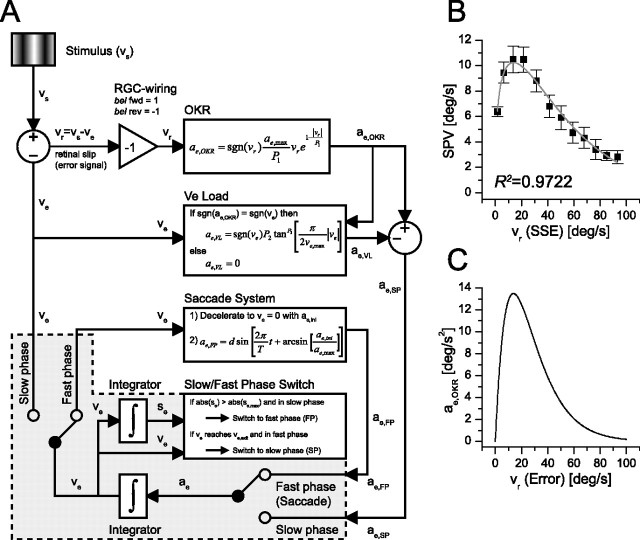Figure 6.
A detailed model used for the computer simulation of the reversed OKR and the SO observed in bel rev. A, Diagram of the OKR model in which neural and physical variables have not been distinguished to increase readability. B, The steady-state error (steady-state retinal slip) versus the SPV curve based on which parameters of the OKR transfer function and the Ve Load transfer function have been estimated. The gray curve is the estimated function used for the model. Error bars indicate SEM. C, The shape of the OKR transfer function based on the estimated parameters. vs, Stimulus velocity; vr, retinal slip velocity (error); ae,OKR, eye acceleration output of the OKR-transfer-function element; Ve Load, eye velocity load element (reducing the eye acceleration). ae,VL, eye acceleration output of the Ve Load element; ae,SP, slow-phase eye acceleration; ae,FP, eye acceleration generated by the Saccade System (fast phase); ae, eye acceleration of the OKR circuitry (slow and fast phase); ve, eye velocity; se, eye position; SPV, steady-state eye velocity; SSE, steady-state error (residual retinal slip velocity when the SPV has been reached). The variables and formulas used in the model blocks are discussed in supplemental Tables 1 and 2 and the supplemental movie (available at www.jneurosci.org as supplemental material).

